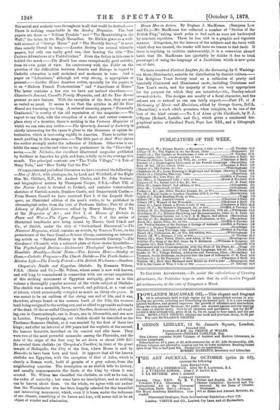kings ; and after an interval of 200 years had
the exploits of the second, the famous Sesostris, inscribed on its central and side faces. They were two of the most powerful monarchs among the Pharaoh; and the date of the reign of the first may be set down as about 1800 B.C. He erected these obelisks (or Cleopatra's Needles) in front of the great temple of Heliopolis, the City of the Sun, where Moses is said by Manetho to have been born and bred. It appears that all the known obelisks are Egyptian, with the exception of that of Arles, which is clearly a Roman work, built of granite of a grey colour, from the neighbouring quarries. The inscription on an obelisk tells its history, and usually commemorates the deeds of the king by whom it was erected. Mr. Wilson has classified the obelisks, as well as he can, in the order of seniority ; but some have no inscriptions, and so nothing can be known about them. On the whole, we agree with our author that the Westminster site has been happily selected for this beautiful and interesting monument, which, even if it loses, under the influence of our climate, something of its lustre and hue, will never fail to be an object of wonder and admiration.


































 Previous page
Previous page